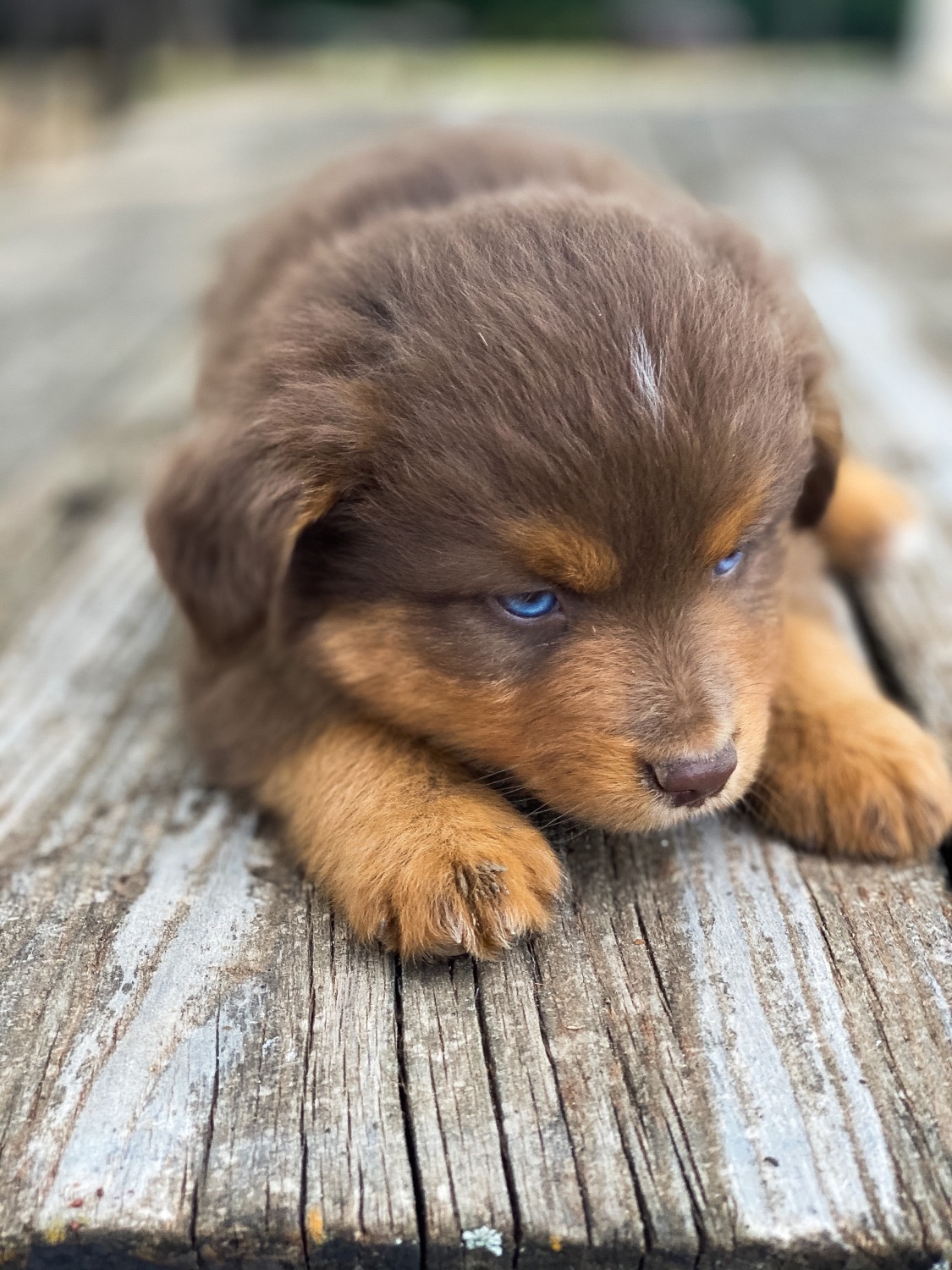What do I need to buy for my puppy?
- Outland Aussies

- Sep 21, 2020
- 4 min read
Updated: Aug 23, 2024
Bringing home your new Outland Aussie is an exciting time, but it also requires preparation to ensure both you and your puppy have everything needed for a smooth transition. Before welcoming your little one, a trip to the pet store is in order to gather supplies. From puppy food to toys and training tools, this guide will walk you through the essentials, including personal recommendations that we use in our program.
For your convenience, we’ve linked a plethora of products we recommend on our Amazon storefront. These are items we’ve used personally or currently use with our dogs, so you can be confident in their quality and suitability.
New Puppy Checklist
Below is a curated list of must-haves for your new puppy, along with insights on each item’s importance:

1. Collar & Harness:
We suggest starting with a basic flat collar, paired with positive reinforcement training to help your puppy learn good leash manners. While it might be tempting to use a harness immediately, traditional harnesses can sometimes trigger a pulling response in dogs. Once your pup has mastered leash skills, you can transition to a more comfortable harness if preferred. Remember, the key is patience and consistency during training.
2. ID Tag, Apple AirTags, or Fi Collars:
Keeping your puppy safe is a top priority. Start with a traditional ID tag that includes your puppy’s name and your contact details. For additional peace of mind, consider upgrading to tech solutions like Apple AirTags or Fi Collars.
Apple AirTags: These small devices can be attached to your dog’s collar, allowing you to track their location via the Find My app on your phone. While not designed specifically for pets, AirTags offer an extra layer of security, especially for quick, local tracking.
Fi Collars: Specifically designed for pets, Fi Collars combine GPS tracking with activity monitoring, so you can keep tabs on your puppy’s location and health. They’re ideal for active dogs and can alert you if your dog ever escapes from your yard.
These options, when combined with a visible ID tag, provide a comprehensive safety net for your puppy.
3. Crate/Kennel:
For crate and potty training, we recommend building your own "Puppy Apartment." While pre-made puppy apartments can cost between $350-$500, making your own can save money and allow you to customize it to your needs. Using wire cutters, create an extra door in the crate’s divider, smoothing out rough edges with a file. This setup can be a game-changer for managing your puppy’s space, encouraging both safe confinement and easy access to a designated potty area. You’ll need a crate that measures around 36.5” L x 23” W x 24.75” H for most puppies.
4. Puppy-Specific Food:
Growing puppies need food that’s specially formulated to meet their nutritional needs. We recommend high-quality puppy food designed for growth, with feeding guidelines adjusted based on your vet’s advice. Typically, puppies between 6-12 weeks require four meals daily, dropping to three meals between 3-6 months, and then twice daily after 6 months. A well-balanced diet is key to supporting your puppy’s development.
5. Training Treats & Bones:
Treats are essential for positive reinforcement during training. Look for high-value training treats that your puppy finds irresistible but are still healthy. Long-lasting chews or bones can also help satisfy their need to chew while promoting dental health.
6. Grooming Supplies:
Even at a young age, it’s important to introduce your puppy to grooming routines. Stock up on a gentle puppy shampoo, a soft brush suitable for their coat type, and nail clippers. Regular brushing helps manage shedding and keeps their coat looking its best, while early exposure to grooming ensures they’re comfortable with the process as they grow.
7. Fun Toys & Enrichment Items:
Toys and enrichment activities play a crucial role in your puppy’s development. They’re more than just a source of entertainment—they also provide mental stimulation, help burn energy, and prevent unwanted behaviors that stem from boredom. Here are a few types of toys and enrichment items we highly recommend:
Interactive Toys: Puzzles, treat-dispensing toys, and snuffle mats challenge your puppy’s problem-solving skills and keep their mind active.
Chew Toys: Teething puppies need safe, durable chew toys to satisfy their urge to chew and relieve discomfort. Look for options like rubber bones, nylon chews, or textured toys designed for puppies.
Stuffed and Squeaky Toys: Plush toys with squeakers or crinkle sounds are perfect for satisfying your puppy’s play drive. Be sure to choose ones that are durable and suited to your dog’s size.
Fetch and Tug Toys: Rope toys, balls, and fetch toys encourage bonding through interactive play while helping to burn off some of that puppy energy.
Providing a variety of toys ensures your puppy stays mentally and physically engaged, which is key to a well-balanced and happy dog.
Final Thoughts
These essentials will set you up for success as you prepare to bring your new Outland Aussie home. Starting off on the right foot with the right supplies ensures a smoother transition and a happier, well-adjusted puppy. Remember, consistency, patience, and positive reinforcement are key to raising a confident and well-behaved dog. Happy puppy parenting!







Comments